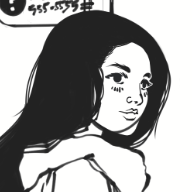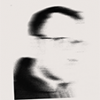-
Posts
269 -
Joined
-
Last visited
Reputation Activity
-
 Stephen_H got a reaction from eb.artserv in Create Guides from shapes
Stephen_H got a reaction from eb.artserv in Create Guides from shapes
+1
Before doing any layout job, I always create very detailed guides grid that margins and columns just don't allow. A simple example is a DL leaflet. Using strokes, I create:
Fold guides page margins panel margins top of paragraph guides
I select all and paste them onto a second, third fourth artboards for consistancy
I then select them all and convert to guides.
I can't leave them as strokes because as guides they are:
Non-printing Easy to hide/reveal with keyboard shortcuts Snappable (Is that a word? I can snap to them)
If I try do this with regular ruler guides, the guides only display on the selected artboard. TIt's a fight to get them nicely positioned since I find when I drag them onto the artboard, they snap to guides on other artboards – even though I can't see them.
Attached is a screenshot showing my preferred set up versus what I currently have to do.
Even if my workflow is rare, the addition of this feature allows for creating diagonal guides, curved guides, short guides and a general ability to copy-n-paste guides onto other artboards and even other documents. All are super useful.
-
 Stephen_H got a reaction from MikkelJP in Hide bounding box / transform handles
Stephen_H got a reaction from MikkelJP in Hide bounding box / transform handles
Not sure I follow you completely., but have you tried pressing the space bar to temporarily hide the bounding box?
-
 Stephen_H got a reaction from duderonomy in Painter's Color Wheel
Stephen_H got a reaction from duderonomy in Painter's Color Wheel
I played with an updated color palette a while back as well. This was my contribution... just combine the wheel, the sliders and the swatches into one palette.
-
 Stephen_H got a reaction from debraspicher in Affinity products for Linux
Stephen_H got a reaction from debraspicher in Affinity products for Linux
For years I've been wanting to move off Windows and onto Linux, but without pro apps for a graphic designer, I can't. I understand the chicken and egg situation - No designers using Linux because there's no apps for them. There are no apps for them because all the graphic designers are using Windows/Mac.
I truely do not care what OS I'm using. I started on Macs and loved the interface, but moved to Windows because Mac's hardware stopped giving me ports and storage. (When you live in Africa, we can't just fit in with first world thinking of "everything in the cloud" and just connect wirelessly. We barely have electricity, let alone always-on highsleed, affordable broadband) It was a hardware decision not an OS preference. I support Affinity because I've always been a sucker for the under dog. It's as much of a poke in Adobe's eye as it is a better financial choice. (I suspect that's the case for many Affinity users).
I apply the same attitude to Linux. It's the under dog and want to support it.
I don't even care what distro I have to use. If Affinity announced that their apps only ran on one speciffic Linux distro, eg: Mint KDE, I would choose that distro as my Linux OS. If they chose Manjaro or Suse... done.
Side note... I'd support a kickstarter fund - even if it's to guage the financial viability of Linux support.
-
 Stephen_H got a reaction from pixeldroid in [ADe] Dimension tool
Stephen_H got a reaction from pixeldroid in [ADe] Dimension tool
I own a copy of iDraw (now called Graphic) from Autodesk for the sole purpose of using its dimension tags on its paths (it's not actually a tool, but rather a stroke style that automatically adds a label showing the length dimension and arrow heads at either end. It even has a document scale so you can draw something 10mm wide, and the label can automatically display 10m if you've applied a 1:1000 scale.
It's an absolute joy to use (it's just a pity that the rest of the application is so horrid) so pleeeeeeeaaaaaase add a dimension tool. Your awesome scaling, snapping and massive zooming has already set the groundwork for it. It seems like a natural progression.
-
 Stephen_H got a reaction from Johannes in Make Blend tool
Stephen_H got a reaction from Johannes in Make Blend tool
Yup. Blends + gradient mesh is still the best way to create a realistic shadow under a 3D object. It takes lots of very difficult hand painting with a soft airbrush to acheive this.
-
 Stephen_H got a reaction from thedrumdoctor in Affinity products for Linux
Stephen_H got a reaction from thedrumdoctor in Affinity products for Linux
Ahhh... remember the days of Windows NT?
-
 Stephen_H got a reaction from CedarBluffGraphics&Layout in Affinity products for Linux
Stephen_H got a reaction from CedarBluffGraphics&Layout in Affinity products for Linux
For years I've been wanting to move off Windows and onto Linux, but without pro apps for a graphic designer, I can't. I understand the chicken and egg situation - No designers using Linux because there's no apps for them. There are no apps for them because all the graphic designers are using Windows/Mac.
I truely do not care what OS I'm using. I started on Macs and loved the interface, but moved to Windows because Mac's hardware stopped giving me ports and storage. (When you live in Africa, we can't just fit in with first world thinking of "everything in the cloud" and just connect wirelessly. We barely have electricity, let alone always-on highsleed, affordable broadband) It was a hardware decision not an OS preference. I support Affinity because I've always been a sucker for the under dog. It's as much of a poke in Adobe's eye as it is a better financial choice. (I suspect that's the case for many Affinity users).
I apply the same attitude to Linux. It's the under dog and want to support it.
I don't even care what distro I have to use. If Affinity announced that their apps only ran on one speciffic Linux distro, eg: Mint KDE, I would choose that distro as my Linux OS. If they chose Manjaro or Suse... done.
Side note... I'd support a kickstarter fund - even if it's to guage the financial viability of Linux support.
-
 Stephen_H got a reaction from Framelynx in Affinity products for Linux
Stephen_H got a reaction from Framelynx in Affinity products for Linux
For years I've been wanting to move off Windows and onto Linux, but without pro apps for a graphic designer, I can't. I understand the chicken and egg situation - No designers using Linux because there's no apps for them. There are no apps for them because all the graphic designers are using Windows/Mac.
I truely do not care what OS I'm using. I started on Macs and loved the interface, but moved to Windows because Mac's hardware stopped giving me ports and storage. (When you live in Africa, we can't just fit in with first world thinking of "everything in the cloud" and just connect wirelessly. We barely have electricity, let alone always-on highsleed, affordable broadband) It was a hardware decision not an OS preference. I support Affinity because I've always been a sucker for the under dog. It's as much of a poke in Adobe's eye as it is a better financial choice. (I suspect that's the case for many Affinity users).
I apply the same attitude to Linux. It's the under dog and want to support it.
I don't even care what distro I have to use. If Affinity announced that their apps only ran on one speciffic Linux distro, eg: Mint KDE, I would choose that distro as my Linux OS. If they chose Manjaro or Suse... done.
Side note... I'd support a kickstarter fund - even if it's to guage the financial viability of Linux support.
-
 Stephen_H got a reaction from Solarius in Affinity products for Linux
Stephen_H got a reaction from Solarius in Affinity products for Linux
For years I've been wanting to move off Windows and onto Linux, but without pro apps for a graphic designer, I can't. I understand the chicken and egg situation - No designers using Linux because there's no apps for them. There are no apps for them because all the graphic designers are using Windows/Mac.
I truely do not care what OS I'm using. I started on Macs and loved the interface, but moved to Windows because Mac's hardware stopped giving me ports and storage. (When you live in Africa, we can't just fit in with first world thinking of "everything in the cloud" and just connect wirelessly. We barely have electricity, let alone always-on highsleed, affordable broadband) It was a hardware decision not an OS preference. I support Affinity because I've always been a sucker for the under dog. It's as much of a poke in Adobe's eye as it is a better financial choice. (I suspect that's the case for many Affinity users).
I apply the same attitude to Linux. It's the under dog and want to support it.
I don't even care what distro I have to use. If Affinity announced that their apps only ran on one speciffic Linux distro, eg: Mint KDE, I would choose that distro as my Linux OS. If they chose Manjaro or Suse... done.
Side note... I'd support a kickstarter fund - even if it's to guage the financial viability of Linux support.
-
 Stephen_H got a reaction from blackbird9 in Affinity products for Linux
Stephen_H got a reaction from blackbird9 in Affinity products for Linux
For years I've been wanting to move off Windows and onto Linux, but without pro apps for a graphic designer, I can't. I understand the chicken and egg situation - No designers using Linux because there's no apps for them. There are no apps for them because all the graphic designers are using Windows/Mac.
I truely do not care what OS I'm using. I started on Macs and loved the interface, but moved to Windows because Mac's hardware stopped giving me ports and storage. (When you live in Africa, we can't just fit in with first world thinking of "everything in the cloud" and just connect wirelessly. We barely have electricity, let alone always-on highsleed, affordable broadband) It was a hardware decision not an OS preference. I support Affinity because I've always been a sucker for the under dog. It's as much of a poke in Adobe's eye as it is a better financial choice. (I suspect that's the case for many Affinity users).
I apply the same attitude to Linux. It's the under dog and want to support it.
I don't even care what distro I have to use. If Affinity announced that their apps only ran on one speciffic Linux distro, eg: Mint KDE, I would choose that distro as my Linux OS. If they chose Manjaro or Suse... done.
Side note... I'd support a kickstarter fund - even if it's to guage the financial viability of Linux support.
-
 Stephen_H got a reaction from Bez Bezson in Affinity products for Linux
Stephen_H got a reaction from Bez Bezson in Affinity products for Linux
For years I've been wanting to move off Windows and onto Linux, but without pro apps for a graphic designer, I can't. I understand the chicken and egg situation - No designers using Linux because there's no apps for them. There are no apps for them because all the graphic designers are using Windows/Mac.
I truely do not care what OS I'm using. I started on Macs and loved the interface, but moved to Windows because Mac's hardware stopped giving me ports and storage. (When you live in Africa, we can't just fit in with first world thinking of "everything in the cloud" and just connect wirelessly. We barely have electricity, let alone always-on highsleed, affordable broadband) It was a hardware decision not an OS preference. I support Affinity because I've always been a sucker for the under dog. It's as much of a poke in Adobe's eye as it is a better financial choice. (I suspect that's the case for many Affinity users).
I apply the same attitude to Linux. It's the under dog and want to support it.
I don't even care what distro I have to use. If Affinity announced that their apps only ran on one speciffic Linux distro, eg: Mint KDE, I would choose that distro as my Linux OS. If they chose Manjaro or Suse... done.
Side note... I'd support a kickstarter fund - even if it's to guage the financial viability of Linux support.
-
 Stephen_H got a reaction from thedrumdoctor in Affinity products for Linux
Stephen_H got a reaction from thedrumdoctor in Affinity products for Linux
For years I've been wanting to move off Windows and onto Linux, but without pro apps for a graphic designer, I can't. I understand the chicken and egg situation - No designers using Linux because there's no apps for them. There are no apps for them because all the graphic designers are using Windows/Mac.
I truely do not care what OS I'm using. I started on Macs and loved the interface, but moved to Windows because Mac's hardware stopped giving me ports and storage. (When you live in Africa, we can't just fit in with first world thinking of "everything in the cloud" and just connect wirelessly. We barely have electricity, let alone always-on highsleed, affordable broadband) It was a hardware decision not an OS preference. I support Affinity because I've always been a sucker for the under dog. It's as much of a poke in Adobe's eye as it is a better financial choice. (I suspect that's the case for many Affinity users).
I apply the same attitude to Linux. It's the under dog and want to support it.
I don't even care what distro I have to use. If Affinity announced that their apps only ran on one speciffic Linux distro, eg: Mint KDE, I would choose that distro as my Linux OS. If they chose Manjaro or Suse... done.
Side note... I'd support a kickstarter fund - even if it's to guage the financial viability of Linux support.
-
 Stephen_H reacted to Pufty in Affinity products for Linux
Stephen_H reacted to Pufty in Affinity products for Linux
Love this response to the point where I got nothing to add... Only that I'd be behind paying again or joining the kickstarter fund.
On my own I STILL switched to Linux, even though it heavily hurt my ability to create, but I took extra hours after work to do my design tasks on windows and now I've got a virtual machine(Wine path wasn't a success for me) on my Linux Desktop. It's slow and finnicky, but I still choose to use Affinity any way I can.
-
 Stephen_H got a reaction from walt.farrell in Colour shift in the display - white displays as pale yellow
Stephen_H got a reaction from walt.farrell in Colour shift in the display - white displays as pale yellow
Walt... you're a genius. Your answer sent me in the right direction.
I discovered this problem wasn't limited to Publisher - but involved displaying all imagery through Windows (Except for PDFs, go figure). It turns out that I only get this problem when I have a second monitor plugged in with the display setting on "Second Screen Only". I change it to Duplicate screen" and everything is fine. I'm guessing my Dell monitor is forcing an uneccessary colour display profile to be used.
So this turns out to be a Windows issue instead of a Publisher issue. This is new and has never happened before (I know, I use "Second Screen" every day at work)
Thank you everyone who helped me solve this puzzle.
-
 Stephen_H got a reaction from Pufty in Affinity products for Linux
Stephen_H got a reaction from Pufty in Affinity products for Linux
For years I've been wanting to move off Windows and onto Linux, but without pro apps for a graphic designer, I can't. I understand the chicken and egg situation - No designers using Linux because there's no apps for them. There are no apps for them because all the graphic designers are using Windows/Mac.
I truely do not care what OS I'm using. I started on Macs and loved the interface, but moved to Windows because Mac's hardware stopped giving me ports and storage. (When you live in Africa, we can't just fit in with first world thinking of "everything in the cloud" and just connect wirelessly. We barely have electricity, let alone always-on highsleed, affordable broadband) It was a hardware decision not an OS preference. I support Affinity because I've always been a sucker for the under dog. It's as much of a poke in Adobe's eye as it is a better financial choice. (I suspect that's the case for many Affinity users).
I apply the same attitude to Linux. It's the under dog and want to support it.
I don't even care what distro I have to use. If Affinity announced that their apps only ran on one speciffic Linux distro, eg: Mint KDE, I would choose that distro as my Linux OS. If they chose Manjaro or Suse... done.
Side note... I'd support a kickstarter fund - even if it's to guage the financial viability of Linux support.
-
 Stephen_H got a reaction from msdobrescu in Affinity products for Linux
Stephen_H got a reaction from msdobrescu in Affinity products for Linux
For years I've been wanting to move off Windows and onto Linux, but without pro apps for a graphic designer, I can't. I understand the chicken and egg situation - No designers using Linux because there's no apps for them. There are no apps for them because all the graphic designers are using Windows/Mac.
I truely do not care what OS I'm using. I started on Macs and loved the interface, but moved to Windows because Mac's hardware stopped giving me ports and storage. (When you live in Africa, we can't just fit in with first world thinking of "everything in the cloud" and just connect wirelessly. We barely have electricity, let alone always-on highsleed, affordable broadband) It was a hardware decision not an OS preference. I support Affinity because I've always been a sucker for the under dog. It's as much of a poke in Adobe's eye as it is a better financial choice. (I suspect that's the case for many Affinity users).
I apply the same attitude to Linux. It's the under dog and want to support it.
I don't even care what distro I have to use. If Affinity announced that their apps only ran on one speciffic Linux distro, eg: Mint KDE, I would choose that distro as my Linux OS. If they chose Manjaro or Suse... done.
Side note... I'd support a kickstarter fund - even if it's to guage the financial viability of Linux support.
-
 Stephen_H got a reaction from Dan C in Colour shift in the display - white displays as pale yellow
Stephen_H got a reaction from Dan C in Colour shift in the display - white displays as pale yellow
Walt... you're a genius. Your answer sent me in the right direction.
I discovered this problem wasn't limited to Publisher - but involved displaying all imagery through Windows (Except for PDFs, go figure). It turns out that I only get this problem when I have a second monitor plugged in with the display setting on "Second Screen Only". I change it to Duplicate screen" and everything is fine. I'm guessing my Dell monitor is forcing an uneccessary colour display profile to be used.
So this turns out to be a Windows issue instead of a Publisher issue. This is new and has never happened before (I know, I use "Second Screen" every day at work)
Thank you everyone who helped me solve this puzzle.
-
 Stephen_H reacted to bsm3d in Affinity products for Linux
Stephen_H reacted to bsm3d in Affinity products for Linux
Hello All, I'm new here
For the story I switched from Adobe since they go to cloud licences, killed Fireworks and made photoshop so heavy I need to upgrade my computer each years...I was really desesparated to find an alternative to and a day Affinity Photo coming ! Thanks you ! For the past I was Beta tester of TVPaint (since amiga golden days) and made plug-ins for. I'm now CG Teacher in Film / VFX in the biggest Belgium CG College, since I show Affinity to my students many of switched from Photoshop to Affinity...
In VFX Industries we work on LINUX, why? No licences for OS, stability, no forced updates, better memory management etc and we have all our softwares on Linux (Houdini, Nuke, Fusion, DaVinci, Maya, 3D-Coat, Clarisse, Modo, Substance, Unity, Unreal,...) but we still don't have pro images softwares and sorry but Gimp and Krita is not at the level of Affinity or Photoshop...Today Linux is growing more and more in VFX market since Microsoft release a playschool OS called Windows 10, this is not an OS but a Store with so much garbage, Telemetry, forced updates, bugs, OS in cloud,... Does microsoft realise they sales a Windows 10 Pro with such garbage as Candy Crush, Disney Magical, Paint3D,...??? Ok for Familly edition but not for the Pro market... Windows 10 is focusing on conssumers market, tablet, Windows store and forget Pro!
If a day Adobe release Photoshop over Linux it's the end of Windows 10 for Pro...
This is why we migrate more and more on Linux, so there is a market to take.
Regards,
BSM
Note: sorry for my bad english writing.
-
 Stephen_H reacted to Sjak in Affinity products for Linux
Stephen_H reacted to Sjak in Affinity products for Linux
I have been a heavy photoshop user from before the CS versions and I final jumped over to finally get away from Windows and go to Linux.
Adobe was always my main reason for sticking to windows but hey! I can accept to become a dual booter and/or use wine a lot more. (not that Adobe works really well with wine)
Just today I simply stumbled across Affinity and it looks really good. Truly I don't understand why our price point is this low. And I fully understand why you think you can make the jump to Linux. But you can't make a business case out of questions on people asking for it. so in order to help me and my fellow linux creatives I just want to poin to the easiest way to test a business case that at the same time is great PR for your product for Windows and OSX: ever thought of setting up a kickstarter campaign for a linux version of the software...? There have been a number of successful software kickstarts and you have it way easier as you already have a great product to show of you just need time to sit down and actually calculate how difficult is would be and set a campaign goal. You might be surprised that Linux users are not as cheap as you think they are. Hey I pay adobe £49 every month.. but won't be doing that for long now I found you guys.
Just wanted to share my thoughts.
-
 Stephen_H got a reaction from Cuando in All UI Elements are too small on a 5k iMac
Stephen_H got a reaction from Cuando in All UI Elements are too small on a 5k iMac
If an application is "Retina Ready", does it use raster or vector UI elements? Thought they would be made as SVG files and no longer as PNGs to allow any number of higher resolution devices and scaling.
If they are vectors, then scaling would be possible, but if pixel-based, then I can see how that would be a hug amount of work to create a whole new set of interface icons.
Please can a developer enlighten me on this – if my assumption is wrong, then it might stop a whole bunch of my requests/complaints/opinions before I even post them.
-
 Stephen_H got a reaction from Cuando in All UI Elements are too small on a 5k iMac
Stephen_H got a reaction from Cuando in All UI Elements are too small on a 5k iMac
The interface is definitely smaller on our 27" iMac (non-retina) than on my 21" iMac (also non-retina… sigh). I also find some icons a bit pokey. Most are fine, but the colour swatch palette seems particularly prone to me missing the icons I want to click that has me concentrating VERY hard whenever I select a swatch or eyedropper. It should be effortless, not a speed-hump.
Tools and top buttons are perfect, so perhaps its a difference of opinion between your developers? Out of curiosity, I checked icon sizes and this is what I found:
Top buttons: 36 x 36 pixels
Tools: 26 x 26 pixels
Add to swatches icon: 16 x 16 pixels
Colour Swatches: 14 x 14 pixels
Style Swatches: 44 x 44 pixels
Some of these do feel a bit small, and I'm amazed that the colour swatches should be the smallest icons in the whole application, while the style swatches are the largest. Please tell me that in the future, both sizes will be selectable options – that'll be awesome! (even better, add your super zoom slider to all swatch palettes so we can dynamically choose our own preferred sizes. They're square so they won't even pixelate)
Keep up the great work guys. You've got a winner here – our comments are only intended to make it waaaaaay better than the current crop of [Adobe] products.
-
 Stephen_H got a reaction from languidcorpse in Can we just get the basics that are missing, and not worry about unique, cutting edge features for now?
Stephen_H got a reaction from languidcorpse in Can we just get the basics that are missing, and not worry about unique, cutting edge features for now?
I purchased Designer and Photo years ago but I just couldn't replace Illustrator & Photoshop because of a few missing features that are just workflow basics. I've moved to the Windows platform and just downloaded new trial versions of them to give them another chance, and these problems persist. Most of them relate to features that prevent the user from making critical, unprofessional mistakes like inconsistent color use across multiple documents. If you are deigning a flyer, a business card and a name badge, you can't have variations between them. These are a few [very] minor omissions that I am missing that risks me making amateurish mistakes:
- Global swatches don't carry to another document when copy-n-pasting a logo from one document to another (same as in Publisher)
- Swatches not carrying over to the new document also means that overprint setting are lost because overprint is defined in the swatch, not in the object.
- I can't tell what color mode I'm working in. If my mode is RGB for a flyer, I need something to shout out at me, or at least give me a clue that my print job is going to be disaster. A simple RGB/CMYK icon would suffice. Even Photo displays its color mode in the document's header, but Designer [where it's more important] doesn't.
- The colour picker only picks up RGB/CMYK values, not a global swatch. Even if I've pasted a logo into a new document and it's displaying a global color, the eyedropper doesn't read it as a global color so I can't even reliably copy colors from my source logo.
- To duplicate an object by dragging it, I have to press the Alt key before I select the object, not during the drag. Most of the time, I need to be certain I have selected the correct object before I duplicate it, however, now I have to duplicate something and then find out if I selected correctly. I don't know how many times I have moved items I want to duplicate and duplicated items I didn't want to duplicate because of this. An application is not fast to work in if I'm constantly undoing my actions.
- Changing the colors of margins & guides. If I design a blue brochure, my margins and guides disappear. I need to make them red or yellow or anything. I don't expect to be able to mix my own colors, but a dozen pre-mixed swatches to choose from would solve this problem. (apart from working in wireframe mode)
- Connecting the selected transform corner in the transform palette to the free transform with the move tool. It's very strange that I can select a corner in the transform palette, but then I always rotate around the center. I have to manually type rotation values in degrees to get the rotation around a corner. Why the disconnect? This disconnect is similar to the disconnect I experience between the swatches, color mixer and eye dropper.
- Previewing at export. Even in Photo, I can't see the effect of the level of JPEG compression being applied to my exported files (neither in Designer nor Photo). I have to export a file half a dozen times until I hit upon that sweet spot of small file size to barely noticable quality loss. Even the open source GIMP does this with a live preview at export. I can do awesome professional work, and then break it all with a poor export... and not even realise it.
- Proofing colors. I really need to be able to see how my colors will separate before I save my PDF. If I've accidentally worked in RGB, this will reveal my mistake as I go to repro. Overprinting and knockout will also be a disaster if not picked up in time. (Who here hasn't experienced the dreaded white text set to overprint and wondered where all your text went?). This feature alone forces me to keep a professional, licensed copy of Adobe Acrobat around to preview color separations. In my final repro file, I have to know if my spot colors are still spots and if I'm printing fine black text as 100% black, or a full color breakdown that will turn my single color print job into a full color one. Previewing the separations (or channels in your photo editor) points out my potential errors.
- Overprinting settings. The previous point leads straight into this one. Why is over printing set in the swatch and not the object? If I want some small paragraph text to over print, but large display text to knockout, I have to make 2 identical black swatches to do this. Why can't I specify this on an object-by-object basis? I guess "Multiply" does the same thing and works as a work-around, but you're targeting print designers, and use the term overprint yourselves so why the strange and risky implementation.
- Snapping to "round" values. When manually selecting a color in CMYK, we are inevitably creating a color using round number values from a color chart. It's slow and frustrating trying to select exactly 50% in a slider as it hops from 49 to 51 and back again while we search for that perfect pixel placement. How about snapping to increments of 5% by holding down the shift key? Your snapping features are awesomely powerful, but only in the document. Why not extend this into the sliders and the rest of the application? (Admittedly, I don't know any other application that does this, but it makes sense and would be welcome.)
Basic features that are even in open source software seem to be missing. We waited for years to get arrow heads. You claimed it was because you wanted to get it awesome, but they are no more powerful/different to anything else out there on the market. I suspect we only got them when Publisher was released. Did we have to wait for a whole new app to be leased to get arrow heads? Now we sit with other missing basic, common features like:
- Blend/Interpolate
- Stroke drawing tools like a grid tool and a straight line tool. These are enormous time savers.
- Tabs. (I understand you want to protect Publisher by keeping high end text features like hyphenation, drop-caps and text wrap out of Designer, but this feels like a very basic feature compared to your range of kerning, alignment and Opentype features already here from day one)
I understand that everyone's needs are different and you can't satisfy everyone, but you are targeting print designers as well and illustrators and web designers, and these are all features every professional expects and is surprising that they're not here. You give us features that most professionals just leave on the defaults because few of us even understand them (like color profiles and LUTs), but then drop the ball by not pasting a global swatch from one document to another.
It's confusing and just doesn't make me feel confident in the files I send to print.
Please can you look at these issues before adding new features. I understand that new features are needed to sell products, but a lot of us early adopters are just wondering where the small tweaks and refinements are.
It seems that your development team needs to consult with an old school designer or printer to get these fundamentals right. It feels like you've only got young designers who have grown up with an RGB workflow and have never had to bang out 6 flyers in an afternoon and send them to print with the job being rejected.
-
 Stephen_H got a reaction from qbenguy in Can we just get the basics that are missing, and not worry about unique, cutting edge features for now?
Stephen_H got a reaction from qbenguy in Can we just get the basics that are missing, and not worry about unique, cutting edge features for now?
I forgot to add another problem with swatches not carrying over to another document via copy-n-paste... if your swatch is a SPOT color, the SPOT swatch is left behind. Try and re-make that swatch from your pasted object and you'll only create a CMYK swatch. Your SPOT color is gone for good.
This is a blinding oversight that should be treated as a bug fix rather than a missing feature.
-
 Stephen_H got a reaction from qbenguy in Can we just get the basics that are missing, and not worry about unique, cutting edge features for now?
Stephen_H got a reaction from qbenguy in Can we just get the basics that are missing, and not worry about unique, cutting edge features for now?
I purchased Designer and Photo years ago but I just couldn't replace Illustrator & Photoshop because of a few missing features that are just workflow basics. I've moved to the Windows platform and just downloaded new trial versions of them to give them another chance, and these problems persist. Most of them relate to features that prevent the user from making critical, unprofessional mistakes like inconsistent color use across multiple documents. If you are deigning a flyer, a business card and a name badge, you can't have variations between them. These are a few [very] minor omissions that I am missing that risks me making amateurish mistakes:
- Global swatches don't carry to another document when copy-n-pasting a logo from one document to another (same as in Publisher)
- Swatches not carrying over to the new document also means that overprint setting are lost because overprint is defined in the swatch, not in the object.
- I can't tell what color mode I'm working in. If my mode is RGB for a flyer, I need something to shout out at me, or at least give me a clue that my print job is going to be disaster. A simple RGB/CMYK icon would suffice. Even Photo displays its color mode in the document's header, but Designer [where it's more important] doesn't.
- The colour picker only picks up RGB/CMYK values, not a global swatch. Even if I've pasted a logo into a new document and it's displaying a global color, the eyedropper doesn't read it as a global color so I can't even reliably copy colors from my source logo.
- To duplicate an object by dragging it, I have to press the Alt key before I select the object, not during the drag. Most of the time, I need to be certain I have selected the correct object before I duplicate it, however, now I have to duplicate something and then find out if I selected correctly. I don't know how many times I have moved items I want to duplicate and duplicated items I didn't want to duplicate because of this. An application is not fast to work in if I'm constantly undoing my actions.
- Changing the colors of margins & guides. If I design a blue brochure, my margins and guides disappear. I need to make them red or yellow or anything. I don't expect to be able to mix my own colors, but a dozen pre-mixed swatches to choose from would solve this problem. (apart from working in wireframe mode)
- Connecting the selected transform corner in the transform palette to the free transform with the move tool. It's very strange that I can select a corner in the transform palette, but then I always rotate around the center. I have to manually type rotation values in degrees to get the rotation around a corner. Why the disconnect? This disconnect is similar to the disconnect I experience between the swatches, color mixer and eye dropper.
- Previewing at export. Even in Photo, I can't see the effect of the level of JPEG compression being applied to my exported files (neither in Designer nor Photo). I have to export a file half a dozen times until I hit upon that sweet spot of small file size to barely noticable quality loss. Even the open source GIMP does this with a live preview at export. I can do awesome professional work, and then break it all with a poor export... and not even realise it.
- Proofing colors. I really need to be able to see how my colors will separate before I save my PDF. If I've accidentally worked in RGB, this will reveal my mistake as I go to repro. Overprinting and knockout will also be a disaster if not picked up in time. (Who here hasn't experienced the dreaded white text set to overprint and wondered where all your text went?). This feature alone forces me to keep a professional, licensed copy of Adobe Acrobat around to preview color separations. In my final repro file, I have to know if my spot colors are still spots and if I'm printing fine black text as 100% black, or a full color breakdown that will turn my single color print job into a full color one. Previewing the separations (or channels in your photo editor) points out my potential errors.
- Overprinting settings. The previous point leads straight into this one. Why is over printing set in the swatch and not the object? If I want some small paragraph text to over print, but large display text to knockout, I have to make 2 identical black swatches to do this. Why can't I specify this on an object-by-object basis? I guess "Multiply" does the same thing and works as a work-around, but you're targeting print designers, and use the term overprint yourselves so why the strange and risky implementation.
- Snapping to "round" values. When manually selecting a color in CMYK, we are inevitably creating a color using round number values from a color chart. It's slow and frustrating trying to select exactly 50% in a slider as it hops from 49 to 51 and back again while we search for that perfect pixel placement. How about snapping to increments of 5% by holding down the shift key? Your snapping features are awesomely powerful, but only in the document. Why not extend this into the sliders and the rest of the application? (Admittedly, I don't know any other application that does this, but it makes sense and would be welcome.)
Basic features that are even in open source software seem to be missing. We waited for years to get arrow heads. You claimed it was because you wanted to get it awesome, but they are no more powerful/different to anything else out there on the market. I suspect we only got them when Publisher was released. Did we have to wait for a whole new app to be leased to get arrow heads? Now we sit with other missing basic, common features like:
- Blend/Interpolate
- Stroke drawing tools like a grid tool and a straight line tool. These are enormous time savers.
- Tabs. (I understand you want to protect Publisher by keeping high end text features like hyphenation, drop-caps and text wrap out of Designer, but this feels like a very basic feature compared to your range of kerning, alignment and Opentype features already here from day one)
I understand that everyone's needs are different and you can't satisfy everyone, but you are targeting print designers as well and illustrators and web designers, and these are all features every professional expects and is surprising that they're not here. You give us features that most professionals just leave on the defaults because few of us even understand them (like color profiles and LUTs), but then drop the ball by not pasting a global swatch from one document to another.
It's confusing and just doesn't make me feel confident in the files I send to print.
Please can you look at these issues before adding new features. I understand that new features are needed to sell products, but a lot of us early adopters are just wondering where the small tweaks and refinements are.
It seems that your development team needs to consult with an old school designer or printer to get these fundamentals right. It feels like you've only got young designers who have grown up with an RGB workflow and have never had to bang out 6 flyers in an afternoon and send them to print with the job being rejected.













